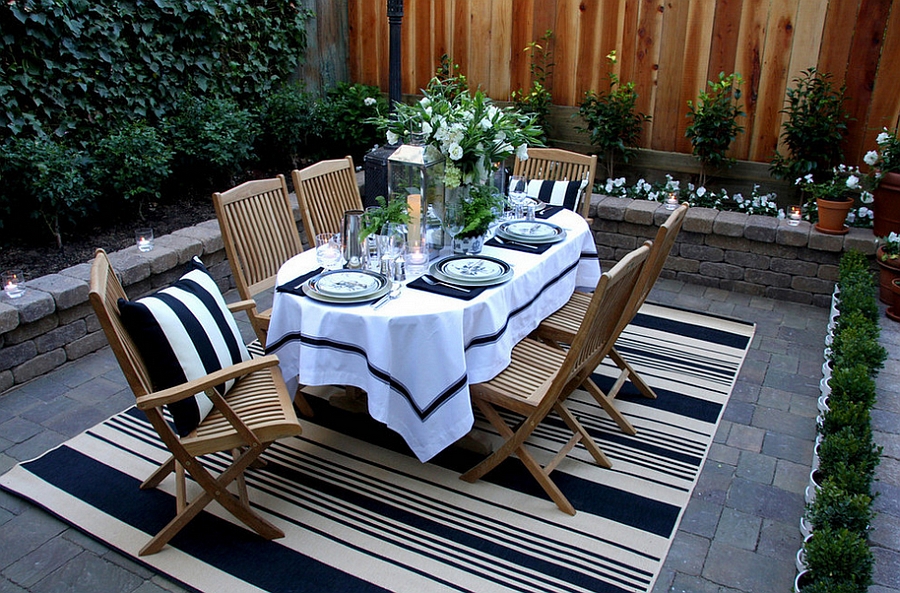Outdoor Dining Ideas

Introduction: Outdoor dining is on the rise and people are finally starting to see the benefits. Not only does it offer a fun, healthy meal that can be enjoyed outside, but it’s also a great way to save energy and help the environment. If you’re looking for eco-friendly outdoor dining ideas, here are some ideas to get you started.

What is Eco-Friendly Outdoor Dining.
There are many types of eco-friendly outdoor dining. Some restaurants focus on sustainable practices, such as using local produce and minerals in their dishes. Others feature sustainable seating options andaterials, like bamboo mats or solar panels to power their meals.
Some benefits of eco-friendly outdoor dining include reducing environmental impact, promoting healthy eating habits, and improving public health. Many restaurants offer special deals and discounts for customers who recycle or compost their food. In addition, many restaurants have plant-based menus that are designed to be vegetarian or vegan friendly.
What are Some of the Benefits of Eco-Friendly Outdoor Dining.
Some benefits of eco-friendly outdoor dining may include:
reducing environmental impact
promoting healthy eating habits
improving public health
helping to reduce wastefulness and pollution in the environment
How to Make the most of Eco-Friendly Outdoor Dining.
To make the most of eco-friendly outdoor dining, it is important to plan your meals carefully and to avoid eating out often. Many restaurants offer special deals and discounts for customers who recycle or compost their food. In addition, many restaurants have plant-based menus that are designed to be vegetarian or vegan friendly.

How to Make the Most of Eco-Friendly Outdoor Dining.
When planning an eco-friendly outdoor dining experience, it’s important to find the right type of food and atmosphere. In general, outdoor dining should be as green as possible: choose sustainable ingredients when cooking and eating out, and avoid using environmentally harmful chemicals in your dishes.
To get started, consider finding a place where you can enjoy a healthy meal outdoors while enjoying the natural surroundings. Some great options include farmers markets or local restaurants that serve sustainable food. If you want to try something new, check out restaurants that offer eco-friendly menus like those offered at The Compound in New York City or Bravo in Los Angeles.

Choose the Right Food.
In order to eat sustainably, it’s important to choose foods that are low in environmentalimpact and unhealthy for humans. To make this process easier, think about what you’re going to eat before you go: are you going to cook? Are you going to eat fast food? Do you have any dietary restrictions? When looking for eco-friendly options, be sure to factor these into your decisionmaking process.
Cook with Less Green Chemistry.
One way to reduce your impact on the environment is by cooking with less green chemistry. This means choosing products that don’t contain metals or toxins that could harm our environment and our bodies. Often times this means using organic ingredients instead of harsh chemical-based ones, avoiding processed foods altogether, and making small lifestyle changes like reducing your intake of saturated fat and cholesterolides (a type of vegetable oil).
Consider the Environment When Eating Out.
Consider how much environmental conscious eating into your diet is actually worth? One study found that even one extra percent of eats from a sustainability perspective resulted in a saving of $US183 per person on average per year! So if you want to do your bit for the planet while eating out – go for it! Just be sure not to overindulge too frequently and make sure all dishes are sourced sustainably/ guilt-free!

Tips for Making the Most of Eco-Friendly Outdoor Dining.
One of the best ways to enjoy eco-friendly outdoor dining is by making time for it. During the summer, take a walk or bike ride in your neighborhood and pick up some fresh produce to cook over an open fire. In the winter, try out new foodpairings inspired by the environment at local farms or wineries. And consider using less water when cooking and serving meals outdoors – using just a fraction of the amount of water that you would use in a restaurant.
Use Less Water.
One of the most important things you can do when eating eco-friendly outdoor dishes is to use less water. When cooking meals outdoors, consider using low-water cooking methods likepressure cookers or slow cooker dishes. You can also save water by not making large pots or pans – instead, pack them with smallclothes, foil, and utensils so they don’t take up any space on your stovetop.
Consider The Food You Eat.
When choosing food to eat outside, think about how it will impact the environment. If you’re going to be eating meat or seafood, make sure it comes from sustainable sources like free-range chickens and free-range eggs – these animals are healthy and environmentally friendly). Additionally, choose products that are low in harmful chemicals and toxins (like certain vegetables grown in Concentrated Solar Fields), which can harm our planet and our health.
Use Seasonal Meals.
When planning your eco-friendly outdoor meal schedule, think about what foods will be available throughout different parts of the year? For example, why not try out new flavors during the fall season with pumpkin pie? Or enjoy a dish made specifically for outdoor dining during wintertime with Feast recipes like roasted cod with blackberry Reduction sauce? By considering what foods will be available throughout different seasons, you’ll be able to find ECO-friendly recipes that fit your needsappingset menu items below).

Conclusion
There are many great reasons to embrace eco-friendly outdoor dining, including reducing environmental impact, improving food quality, and creating delicious and healthy meals. Whether you’re choosing an eco-friendly outdoor dining experience or cooking with less green chemistry, it’s important to consider the environment when eating out. By making time for outdoor dining and using seasonal meals, you can create a sustainable meal plan that meets your needs and those of the planet.




